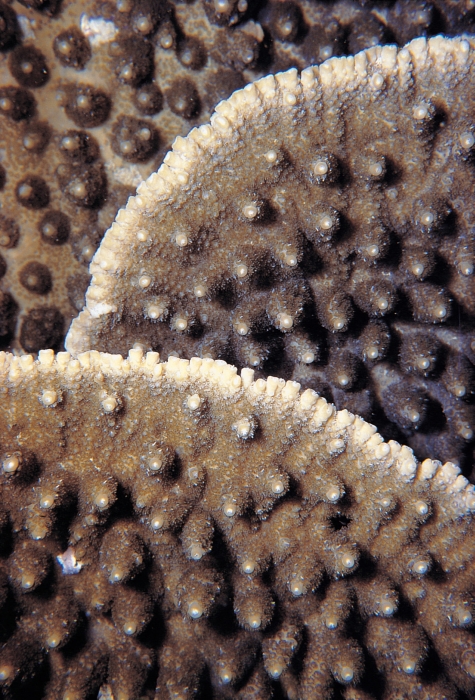New, advanced online publication of research by Foster and colleagues in the journal Coral Reefs explores the impacts of ocean acidification and global warming on the development of the tabling coral Acropora spicifera, an iconic species of the subtropical western Australia coast. The workers implemented three experimental treatments: Acidified conditions (pCO2 of 900 μatm, with a water temperature of 24 °C), warmed temperatures (27 °C, pCO2 of 250 μatm, and a combination of warm and acidified waters (27 °C, pCO2 of 900 μatm). Settlement and calcification rates were monitored and compared to control conditions.
The motivation for this work is both big picture and local. Ocean acidification and warming represent the most significant threats coral reefs will face in the coming century. Beyond this broad brush concern, reefs of the Abrolhos Islands were devastated by mass bleaching during elevated water temperatures (~2-4 °C above the climatological mean), which corresponded to the 2011 austral summer and autumn spawning season of A. spificera. While it is quite clear that adults have a distinct thermal threshold, there is evidence to suggest younger recruits may be more resilient. However, the viability of settling larvae in such warm conditions remained to be seen. Did we lose an entire spawning year of A. spicifera to severely elevated ocean temperatures? Will we continue to face such losses?
The results of the experimental treatments were not particular surprising, but they are extremely significant nonetheless. Settlement of healthy, larval corals was completely unaffected by any of the three experimental treatments, relative to the control. Survival after settlement was also insignificantly different across all three treatments (60-70% of settled larvae). This is clearly good news for larvae looking to settle while conditions are less than ideal for adult colonies.
The “bad news”, so to speak, becomes apparent when examining skeletal weights after long recruit treatment exposure times of 5 weeks: both of the experimental treatments with elevated pCO2 levels show significantly reduced skeletal weights, 48% (high temperature and pCO2) to 60% (high pCO2 alone) lower than the control! Elevated temperature alone raised skeletal weights, albeit insignificantly, by 25%. The real take home message therefore is the susceptibility of smaller juvenile recruits in a high pCO2 world: susceptibility to predation, overgrowth, silt stress, and storm damage.
Source article behind paywall here: http://link.springer.com/article/10.1007%2Fs00338-015-1342-7










0 Comments